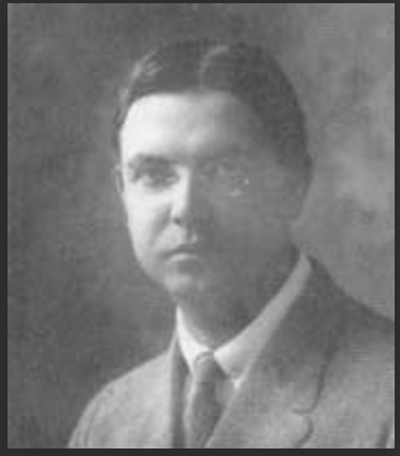FREDERICK CARL FRIESEKE (1874-1939)
 Frederick Frieseke was born in Owosso Michigan in 1874. He studied art at the Art Institute of Chicago in 1893 and then at the Art Students League in New York City in 1897. He moved to Paris in 1898 and studied at the Acadamie Julian and then for a short period at the Acadamie Carmen with James Abbott McNeill Whistler. Frieseke’s early work, consisting of images of women in interior settings, with their fairly close tonalities, reflects Whistler’s influence on him. However, once he and his wife moved to the art colony in Giverny in 1906, where Claude Monet resided, Frieseke came into his own aesthetic. In Giverny, they rented a house and cultivated a colorful garden that became the backdrop to many of Frieseke’s paintings. During his time in Giverny, Frieseke mostly painted images of women, posed in either domestic settings or sun-filled outdoor settings. His main focus in all of his paintings was on the sunlight.
Frederick Frieseke was born in Owosso Michigan in 1874. He studied art at the Art Institute of Chicago in 1893 and then at the Art Students League in New York City in 1897. He moved to Paris in 1898 and studied at the Acadamie Julian and then for a short period at the Acadamie Carmen with James Abbott McNeill Whistler. Frieseke’s early work, consisting of images of women in interior settings, with their fairly close tonalities, reflects Whistler’s influence on him. However, once he and his wife moved to the art colony in Giverny in 1906, where Claude Monet resided, Frieseke came into his own aesthetic. In Giverny, they rented a house and cultivated a colorful garden that became the backdrop to many of Frieseke’s paintings. During his time in Giverny, Frieseke mostly painted images of women, posed in either domestic settings or sun-filled outdoor settings. His main focus in all of his paintings was on the sunlight.
Unlike the artists that preceded him, Frieseke’s impressionism was an unreal construct; his sunlight and color were entirely synthetic. The parasol became a frequent motif in Frieseke’s work, both protecting his female models and further emphasizing their position as articles of beauty and the recipient of the viewer’s gaze. Like many Impressionists, Frieseke often positioned his female figure on a threshold between the interior and the outdoors, between the shadows and the sun. After World War I, Frieseke and his family moved to Normandy because he felt France offered more freedom of expression than the US.
Frederick Frieseke’s earliest mural work was for his patron, Rodman Wanamaker. Frieseke painted mural decorations that were installed in Wanamaer’s New York department store in 1904 and 1907 and for the Rodman Wanamaker Hotel in 1905, the Shelburne Hotel in Atlantic City, New Jersey in 1906 and the Amphitheater of Music in New York in 1908. Art historians credit Wanamaker’s constant commissions as being the sole reason Frieseke was able to devote himself to painting. Sarah Anne O’Bryan, known as Sadie, who was Frieseke’s wife, was a model for many of the figures, elegant and almost six feet tall, she was intelligent, dramatically gregarious and variously talented. The poise and assurance of the figures were undoubtedly inspired by Sadie.
Despite winning many awards for his work, which was acquired by a variety of museums, there was a decline in Frieseke’s popularity after World War I. Critics saw his work as outdated and overly conservative. It was during this same time that the mood of Frieseke’s paintings became more contemplative, his colors muted and somber, and his composition more static.
Today, his artwork is in major public and private collections around the world, including the Metropolitan Museum of Art in New York, the Los Angeles County Museum of Art, the Musee des Impressonnismes in Giveny, and the Thyssen-Bornemisza Museum in Madrid.
